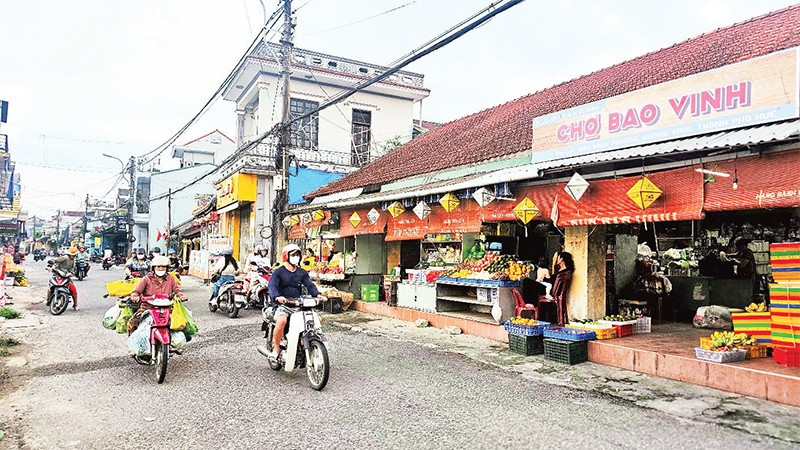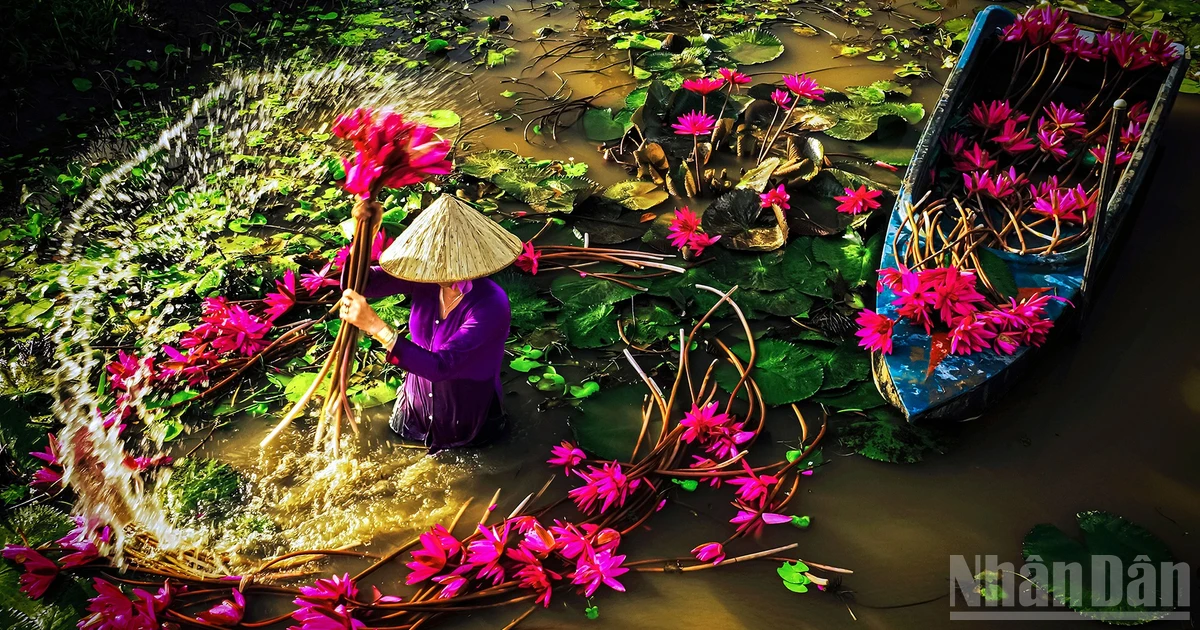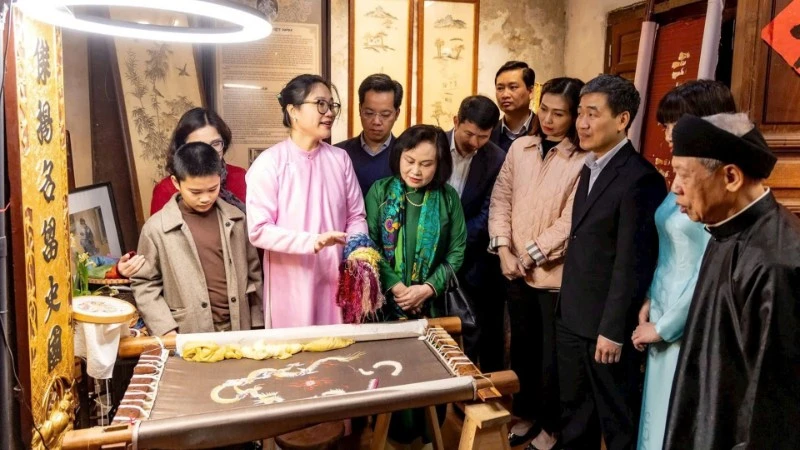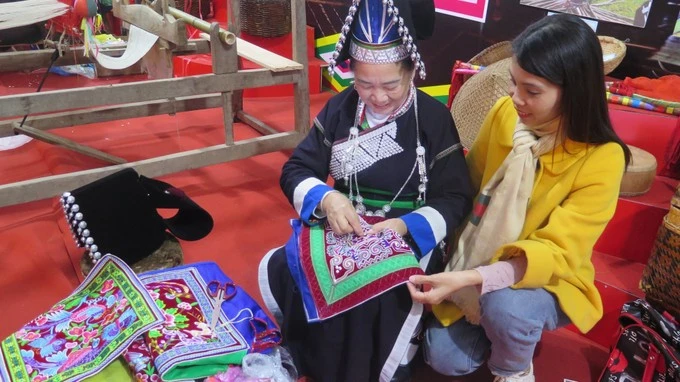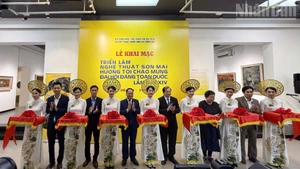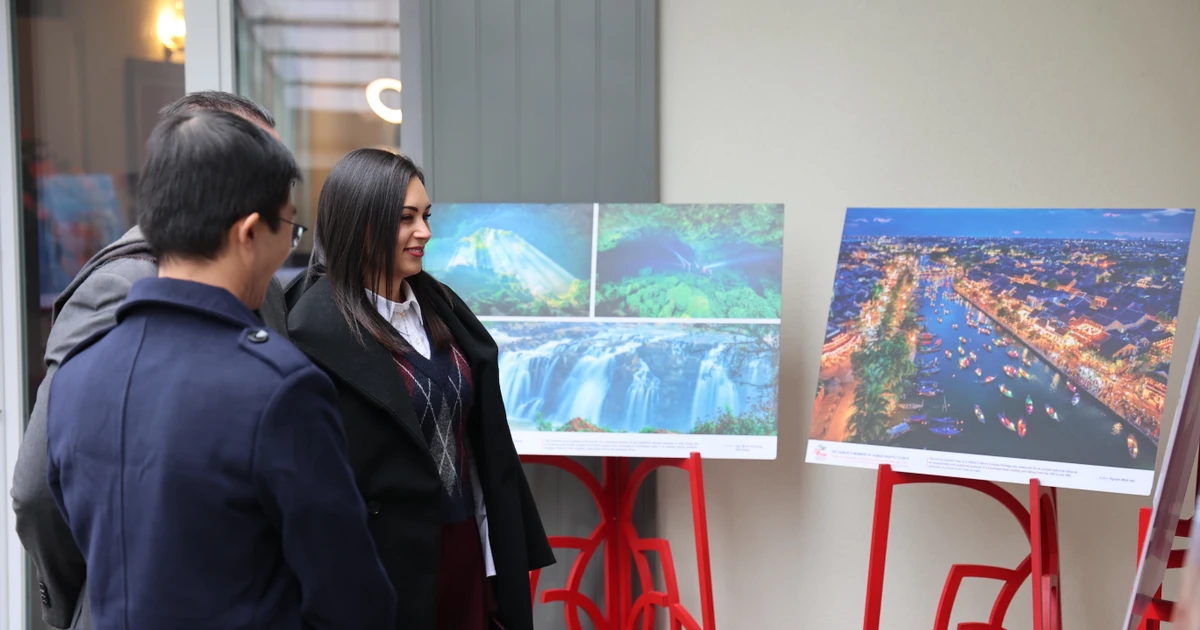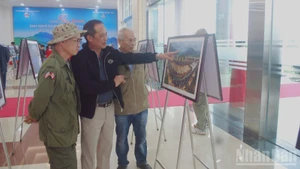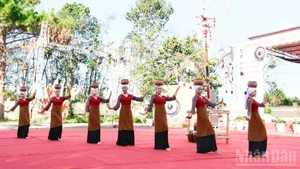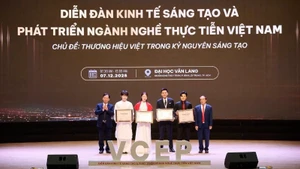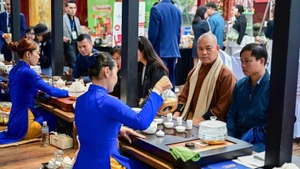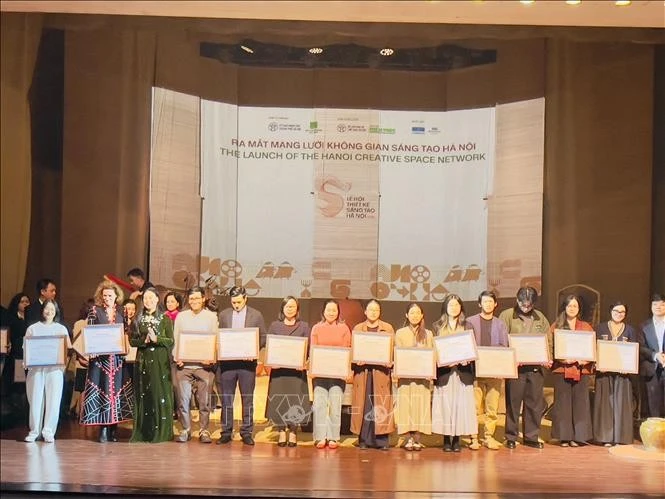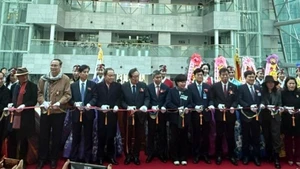After centuries of weathering and natural disasters, the ancient houses and urban architectural structures have severely deteriorated, requiring restoration to preserve Hue’s cultural identity.
Bao Vinh was renowned for its traditional wooden houses, known as “ruong”, and the many traditional crafts that developed alongside Hue’s cultural heritage.
Along with supporting restoration projects to preserve the original wooden houses, Hue is working to conserve the ancient quarter and promote tourism in Bao Vinh.
Preserving the ancient quarter
Located about 3 kilometres northeast of Hue’s centre, outside the imperial citadel, Bao Vinh is associated with Thanh Ha Port — a bustling port in southern Vietnam from the 17th to 19th centuries. Many merchants from China, Japan, India, and Europe came here to trade.
This was also the trading port of Phu Xuan Imperial City during the early Nguyen Dynasty. Considered a valuable cultural relic of Hue, Bao Vinh still has 21 ancient houses and 6 hexagonal houses. Over time, without renovation, most of the houses have severely deteriorated and require restoration.
After more than 20 years of waiting, in November 2024, restoration work began on the first of 21 ancient wooden houses in Bao Vinh to restore its original traditional architecture.
The owner, Phan Thi Dieu Lien, expressed her joy about finally receiving state support for renovation, as the cost was too high for her family.
This is the first ruong house in Bao Vinh to be restored under the provincial project to protect and promote the value of ruong houses in Bao Vinh during the 2023-2026 period.
The two-storey house features traditional architecture with two compartments and a front porch. After more than 100 years, many elements have severely deteriorated, with damaged wooden frames, beams, and roof tiles.
Implementing the restoration project, the Hue City government approved 1 billion VND to restore and preserve the ancient ruong house.
Nguyen Ich Huan, Head of Hue’s Culture and Information Department, shared that Bao Vinh’s ancient houses have severely deteriorated without maintenance. Some risk collapse, while others were sold or demolished for modern rebuilding due to the owners’ inability to restore them.
The restoration investment is crucial to preserve Bao Vinh’s unique architectural values and promote economic development. It also encourages homeowners’ voluntary participation in cultural preservation.
According to Huong Vinh Ward, houses along Bao Vinh Street on the northern bank of the Huong River were built decades ago. Most face Provincial Road 4, with facades being maintained despite a lack of upgrades.
The “Hue Tourism Connect” group had an idea of painting the riverside houses’ backs to create a new viewpoint from river boats, enhancing Bao Vinh’s appeal.
Huong Vinh Ward Chairman Ta Duong Anh Tuan states that preserving Bao Vinh requires the relocation of 48 households, establishing management regulations for an 8-hectare conservation area for tourism development, and creating a detailed restoration plan.
Preserving traditional crafts
Bao Vinh was once famous for its many traditional handicrafts. However, today many crafts have been lost, while others barely maintain minimal production.
Surveys show that before the 1980s, there were nearly 20 households for mother-of-pearl inlay and Kitchen God statue making, which have now been reduced to just 5; blacksmithing decreased from 40 to 28 households; and playing card making, which once had 40 households with 100 workers, is now down to a single household with just one skilled artisan, who is over 70 years old.
Recently, the Thua Thien Hue government officially recognised Bao Vinh blacksmithing as a traditional craft of Thua Thien Hue Province.
The blacksmithing craft in Bao Vinh originated from Hien Luong Village in Phong Dien District and is renowned for its traditional ironwork. About 100 years ago, people migrated to Bao Vinh, forming a specialised blacksmith quarter producing household tools and implements.
Here, workshops manufacture various products, including: agricultural tools (ploughshares, hoes, shovels, hammers, sickles), kitchen utensils (knives, scissors, pots, pans), and decorative items (gates, doors, fences).
Currently, Bao Vinh’s blacksmithing trade includes 28 households with 42 craftspeople. Truong Ty, a 56-year-old blacksmith workshop owner in Bao Vinh, says his facility produces dozens of different products. The workshop currently employs seven workers who work year-round to serve market demands.
Over the past century, local consumer demand has gradually decreased, causing some people to switch to other occupations. To maintain and develop Bao Vinh’s blacksmithing in the future, local authorities will focus on supporting, restoring, and developing the traditional craft, creating favourable conditions for families to participate in production and business activities.
Authorities are also encouraging craftspeople to continue developing traditional blacksmithing while investing in modern equipment to increase production capacity while maintaining traditional methods.
Currently, apprenticeship programmes are mainly informal, driven by workers interested in learning the trade. Ngo Thi Tuyet (from Huong Vinh Commune), now over 70, has spent nearly 60 years making traditional playing cards.
She shared: “Making playing cards is our family tradition, thriving since my grandfather’s time. He taught all eight of his children, who then taught their children, but now I’m the only one continuing the craft. My children can help occasionally, but they don’t want to continue professionally due to low income.”
The Hue City leaders state that preserving and developing traditional crafts alongside tourism is the right and necessary approach for Bao Vinh’s tourism development. Craft revival should focus on adaptive preservation and development to suit modern conditions.
This includes developing new products based on existing handicrafts, focusing on souvenirs and artistically enhanced everyday items, while maintaining heritage elements representative of the local area.
According to experts and managers, in addition to urban planning, Bao Vinh’s preservation should focus on restoring ancient ruong houses and historically significant architecture.
Architectural preservation must go hand-in-hand with maintaining and promoting Bao Vinh’s distinctive traditional crafts. In the long term, it is necessary to restart the conservation and development project for the Bao Vinh old quarter, emphasising preservation combined with tourism, attracting visitors, and developing river and sea routes to and from Thanh Ha-Bao Vinh.
